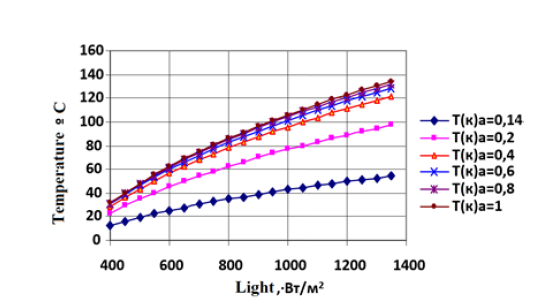


Indian Journal of Science and Technology
Year: 2021, Volume: 14, Issue: 9, Pages: 826-842
Systematic Review
S S Dorzhiev1*, V A Majorov1, E G Bazarova1, Paramvir Singh Ahluwalia2, M I Rosenblum1
1Federal State Budgetary Scientific Institution ”Federal Scientific Agroengineering Center ”VIM”, 1st Institutsky proezd, 5, 109428, Moscow, Russia. Tel.: +8-925-346-3747
2Vertex Industrial Engineering LLP, Delhi, India
*Corresponding Author
Tel: +8-925-346-3747
Enail: [email protected]
Received Date:18 December 2020, Accepted Date:13 March 2021, Published Date:30 March 2021
Objectives: To ensure efficient operation of solar modules and temperature mode in accordance with standard test conditions range within 20-30◦C. Methods: A mathematical model was developed using the laws of photoelectricity, heat and mass transfer, which provides improvement in the efficiency of solar power plants. Findings: This study presents the theoretical analysis of different embodiment for systems of solar modules using physical and mathematical models. The main design and functional characteristics of solar modules were calculated: temperature and efficiency depending on internal parameters and ambient environment. Dependence between temperature and efficiency of solar modules for different values of air temperature, emissivity factor of solar cells, and efficiency of solar power plants, were determined and presented in the form of diagrams. It was found that solar modules have the highest heating temperature at solar irradiance of Еc=1200 W/m2, air temperature of Тa=50◦C, and that the solar modules have the lowest heating temperature at Тa=30◦C and e =0.8, with a decrease in the heating temperature from 111 to 38oС, the efficiency decreases at an air temperature of 50oС and at the emissivity factor of e =0.8 and 0.3 and makes from 4.2 to 10.3%. The dependences were calculated for different latitudes φ: 56o(Moscow), 45o(Krasnodar), 35.5o(Eslamshahr, Iran), 31.6o(Béchar, Algeria), 13.1o(Chennai, India). Solar modules with cooling devices were installed in the Istra district of the Moscow region and bench tests, to specific calculated parameters, were carried out under full-scale conditions. Conclusions: It was found that the efficiency of solar panels increased significantly due to the use of systems with heat-exchange tubes, and the losses, when using an antigravity heat exchanger for cooling photovoltaic cells, reduced by 6-7 times. Novelty: Usage of an anti-gravity heat exchanger to cool the photovoltaic cells, to maintain the optimal operating temperature prevent electrical distortion due to extreme temperatures.
Keywords: Solar panels; air temperature; cooling; emissivity factor; solar irradiance; antigravity tubes; temperature loads; performance improvement
© 2021 Dorzhiev et al.This is an open access article distributed under the terms of the Creative Commons Attribution License, which permits unrestricted use, distribution, and reproduction in any medium, provided the original author and source are credited. Published By Indian Society for Education and Environment (iSee)
Subscribe now for latest articles and news.